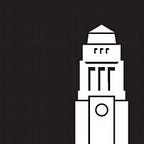Unpacking the Need for Sustainable Curriculum Mapping
In today’s rapidly evolving world, the call for sustainability has become more than just a buzzword; it’s a necessity. As universities strive to meet the rising demand from students for a more sustainable education, they face the challenge of integrating sustainability into their formal curriculum. So, where do we begin?
Integrating Sustainability in the Curriculum
The University of Leeds is committed to enhancing sustainability within the formal curriculum through the Sustainable Curriculum programme. Embedded within the University’s Climate Plan, this initiative seeks to empower every student with the opportunity to engage in sustainability-related study and research. Central to this effort is Education for Sustainable Development (ESD), which equips students with the knowledge and skills to address economic, social, and environmental challenges. This aligns with the Quality Assurance Agency’s Education for Sustainable Development Framework, emphasising the importance of curriculum structures designed to promote sustainable development.
Integrating ESD into the curriculum is not a linear process; it requires continuous reflection and evaluation. One of the first steps needed is mapping the current level of ESD already embedded in the curriculum and identifying areas that require reinforcement.
However, gaining insight into the current level of ESD embeddedness poses considerable challenges. The first hurdle lies in defining the scope of our mapping exercise: Should we analyse an entire faculty, a school, an academic department, or perhaps an individual academic programme? Once the scope is clarified, the next critical step involves selecting an appropriate mapping methodology. One way is using the UN Sustainable Development Goals framework to locate SDG integration in the curriculum. Another is identifying sustainability skills, values, or teaching methods for ESD. Lastly, suitable digital tools are needed to handle the significant data requiring synthesis.
The Mapping Journey at the University of Leeds
To address the challenge of integrating sustainability into its curriculum, the University of Leeds has initiated a comprehensive mapping effort. This endeavour involves exploring various methodologies, including a student-led initiative and a mapping framework. A pilot exercise within the Faculty of Engineering and Physical Sciences focused on mapping SDGs in the curriculum of the School of Civil Engineering.
Employing a keyword search method, the pilot exercise reviewed learning outcomes (LOs) to identify aspects contributing to SDGs. The level of integration was then assessed based on a quantitative criteria table, with results and questionnaires provided to module leaders for reflection.
This pilot mapping pursued several objectives:
- Illustrating the current incorporation of SDGs in the School of Civil Engineering’s curricula.
- Providing a framework for mapping and monitoring SDG inclusion in other academic schools.
- Assisting staff in incorporating sustainability skills in alignment with the Skills Matrix at Leeds.
- Supporting students in identifying the SDGs addressed in their education.
However, the digital tool utilised in this pilot mapping was deemed suboptimal, signalling the need for customisation options and the ability to map across entire programmes. Moving forward, it’s essential to address the limitations of existing digital tools to enhance the efficacy of the mapping process. Customisation options are necessary to accommodate the diverse needs of different academic providers and disciplines. Additionally, the capability to map across entire programmes would significantly improve the tool’s value by providing a comprehensive overview of integrated SDGs.
Aligning closely with the Sustainable Curriculum programme at Leeds, the mapping process should facilitate a comprehensive understanding of sustainability-related skills. Exploring the potential of AI could further enhance the relevance and effectiveness of the mapping process, ensuring that sustainability remains at the forefront of the curriculum.
A Cycle of Continuous Transformation
The strategic integration of sustainability within university education is an ongoing process that transforms education into a platform for addressing future challenges. Mapping exercises help identify strengths and gaps in sustainability offerings, facilitating dialogues with academic staff and stakeholders. Continuous analysis ensures sustainability remains at the forefront, aligned with emergent challenges.
Integrating ESD into the curriculum is not a linear process; it requires continuous reflection and evaluation. One of the first steps needed is mapping the current level of ESD already embedded in the curriculum and identifying areas that require reinforcement.
But the journey doesn’t end there. Universities must continually ask themselves: How can we further expand and deepen sustainability integration within the curriculum? Where should we focus resources? How do we continuously map and analyse our curriculum to ensure sustainability remains at the forefront and aligned with emergent challenges? How do we effectively communicate these efforts to internal and external stakeholders, fostering a positive feedback loop?
The journey towards a Sustainable Curriculum requires ongoing commitment and collaboration. By continually evaluating and enhancing sustainability integration, universities can prepare students to tackle the complex challenges of tomorrow.
Find out more about how you can get involved in Sustainable Curriculum.
Dr Rosario Michel-Villarreal (Lecturer in Sustainability and Business) and Dr Mohsen Besharat (Lecturer in Hydraulics and Water Systems at the School of Civil Engineering)
